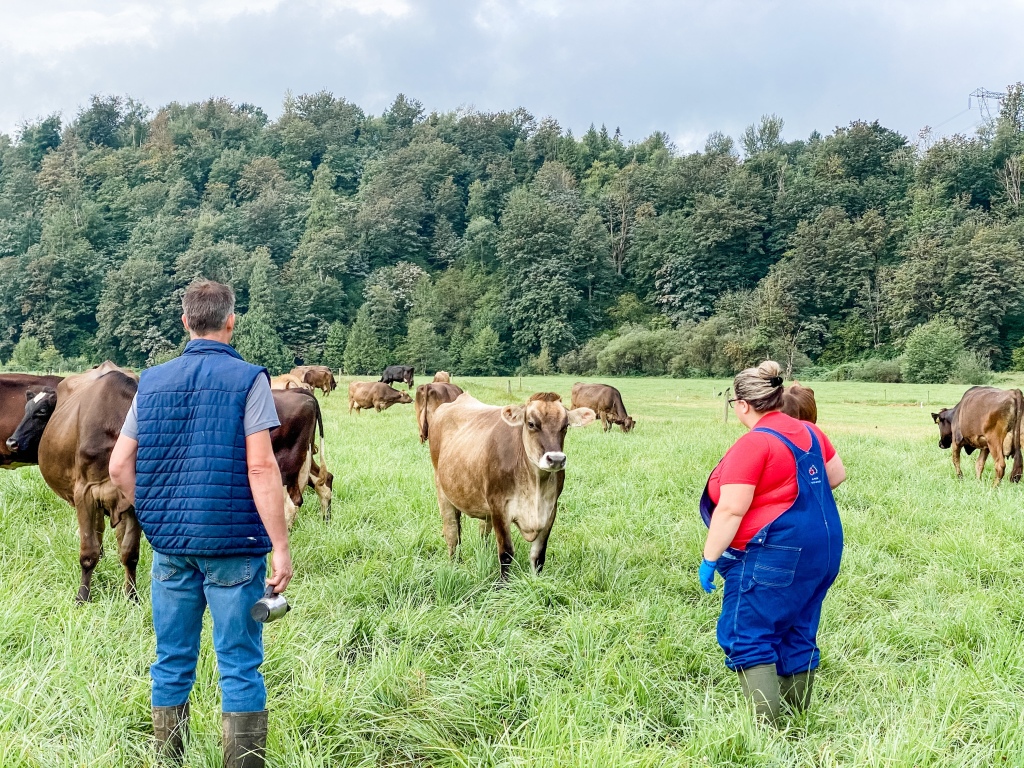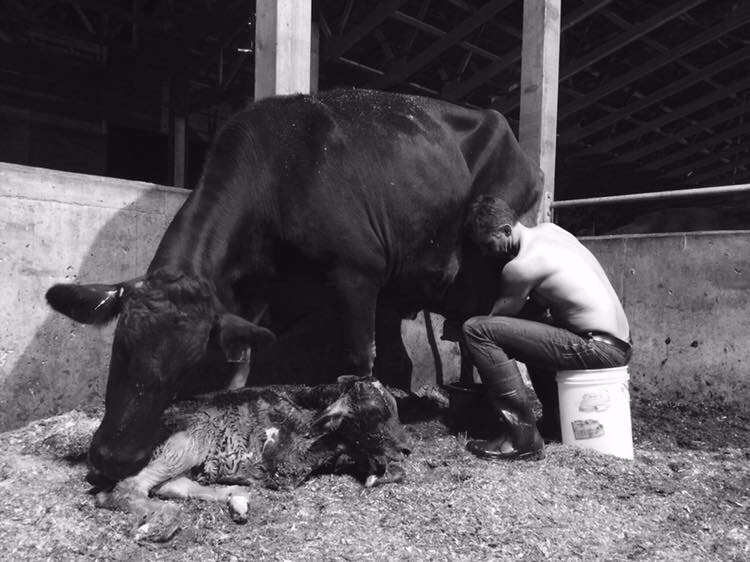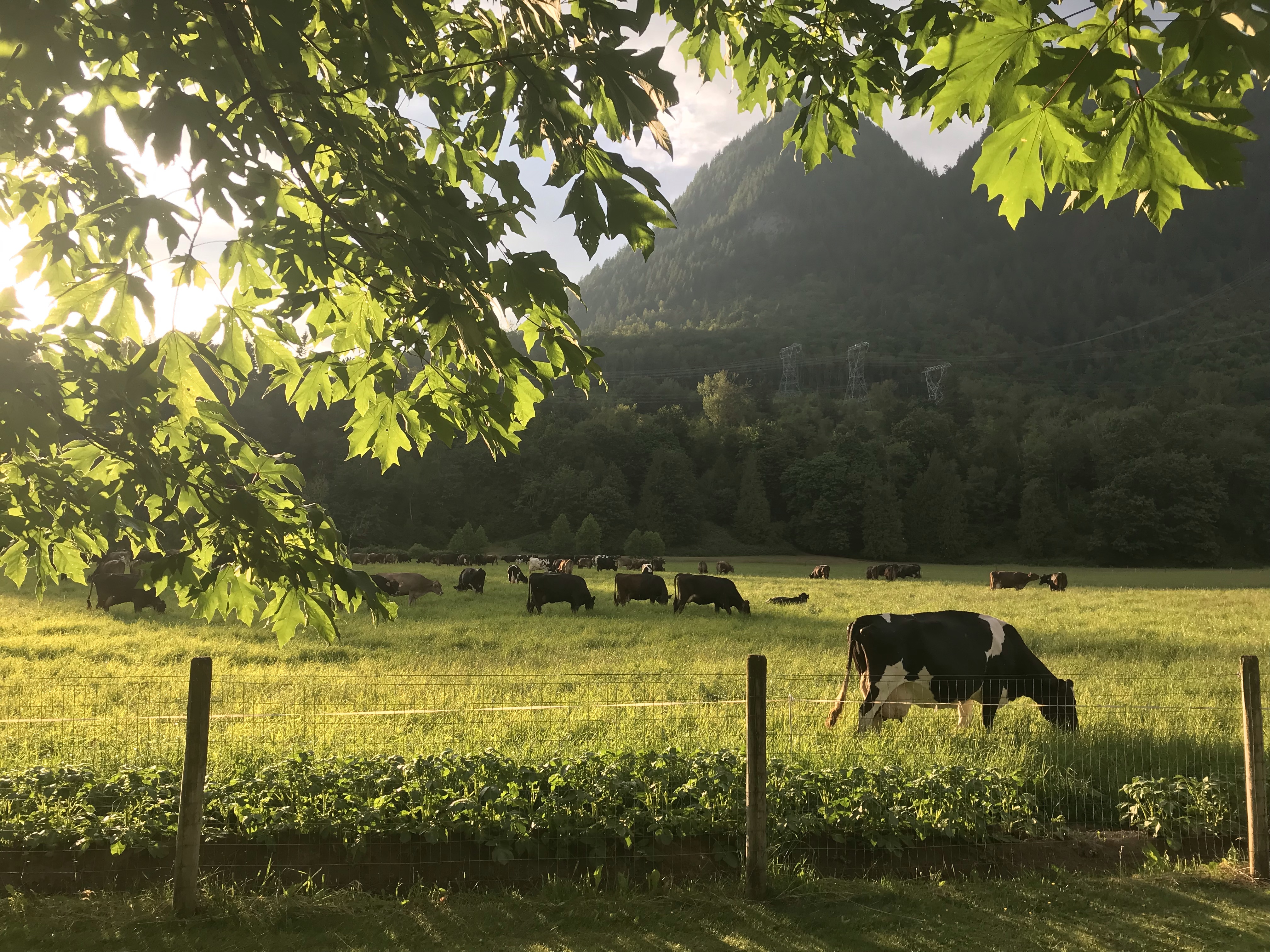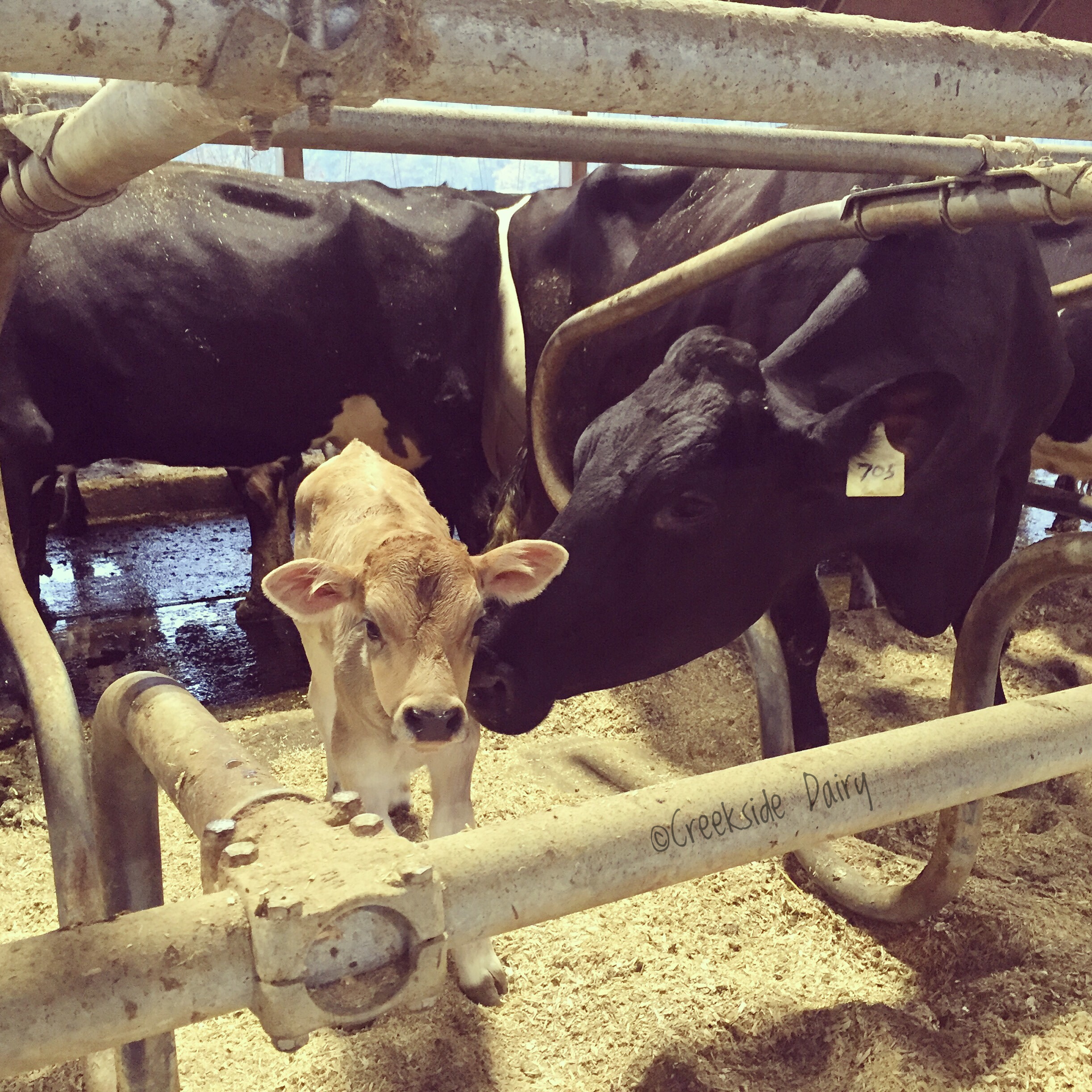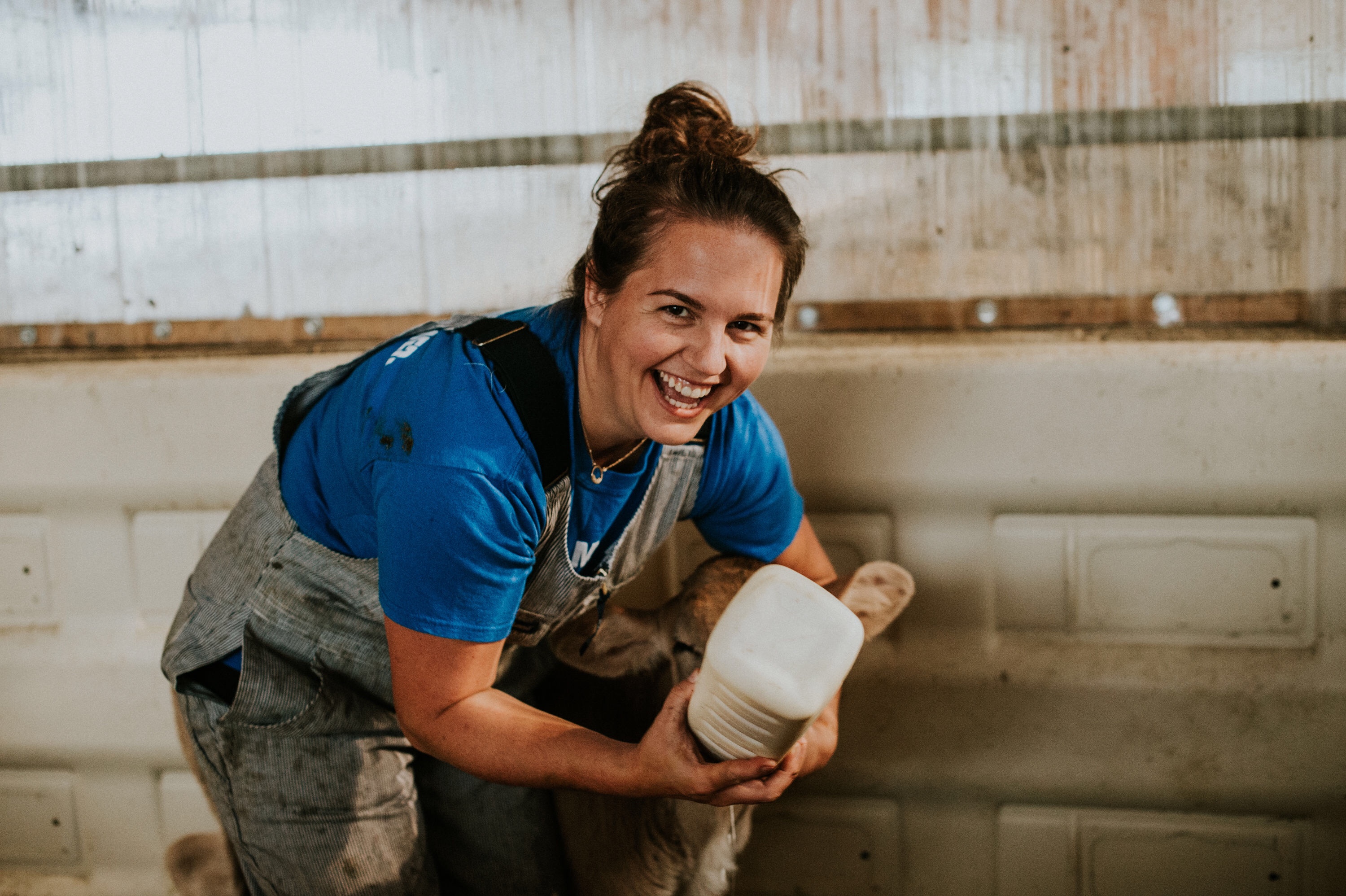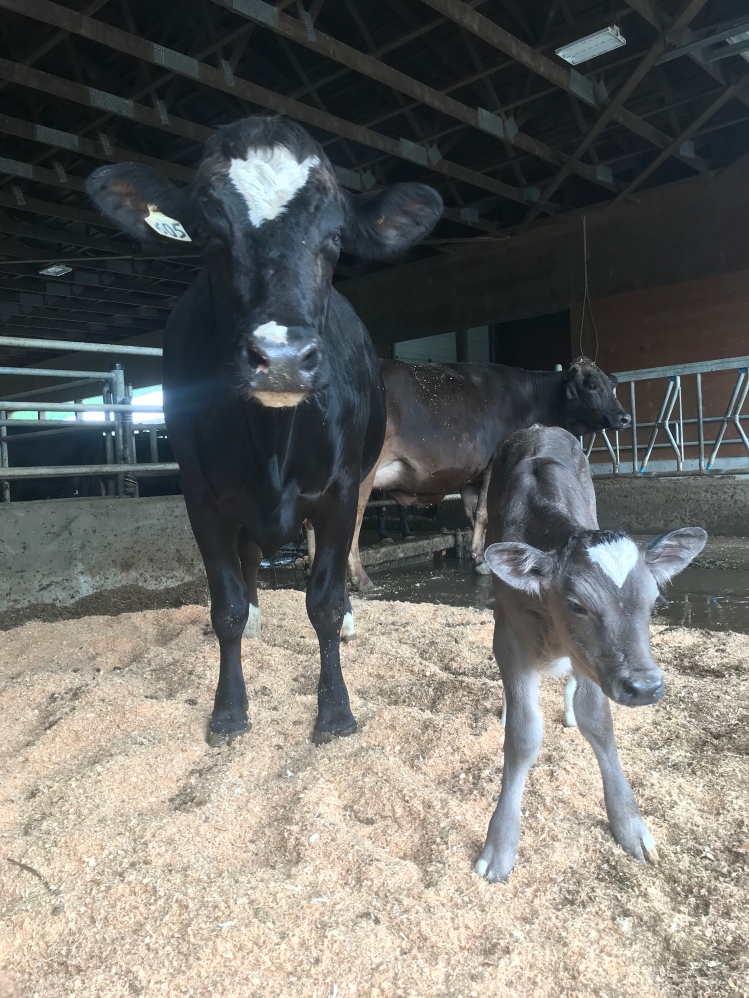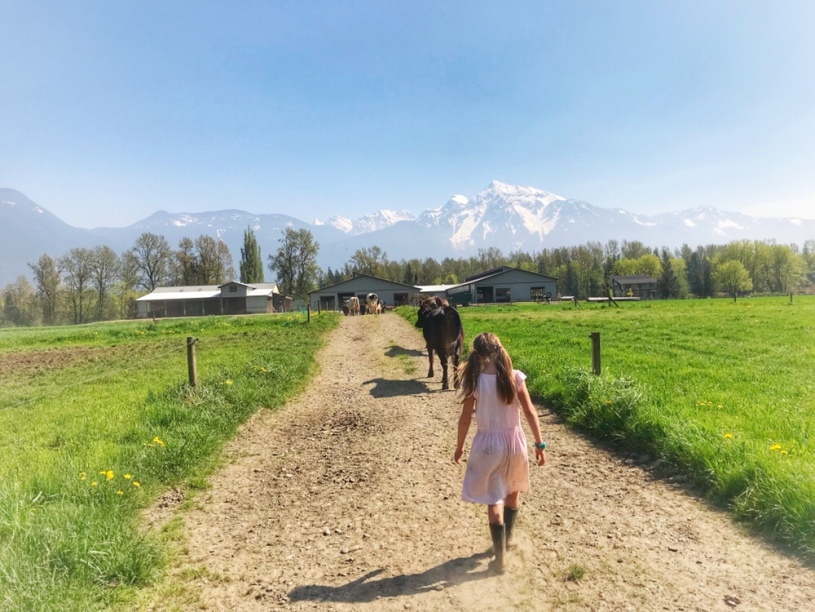Summer is drawing to a close. The golden light of late summer is wonderful for farm photography — even those pesky flies are somewhat beautiful when backlit by warm rays of evening sunshine.
But as beautiful as this scene may be, walking back to the house last night after evening chores I was feeling uninspired and truth be told…discouraged. You see, I’ve been following the drama that has been unfolding in Toronto this past week, and it has me contemplating our efforts to provide an insight into animal agriculture. If you aren’t aware of what has been going on, here is a short summary: In June 2015, an animal rights activist group was standing on a traffic island near a Toronto slaughter house to “bear witness” to the animals going to slaughter, as part of a weekly “vigil” of the Toronto Pig Save. When a truck carrying pigs stopped at the traffic light, one of the activists began trying to give water to the pigs inside the truck. The truck driver stepped out of his truck and confronted the activist. A tense exchange of words and threats followed. The activist, strategically being video taped, claimed that the pigs were suffering and dehydrated. The truck driver told her not to give the pigs water because he had no proof that what she was offering the pigs was indeed water, and asked her to desist. Ignoring him, the activist continued to pour water over the pigs’ snouts. The next day, the farmer contacted the police. Following an investigation, the activist has been charged with mischief for pouring an “unknown liquid” into the trailer.
The whole story seems unbelievable. Why should someone be prosecuted for simply giving a helpless, suffering animal some water? Why should someone face a fine and/or jail time for showing compassion? That’s what the animal rights activists would have you believe. And at face value, it seems like they have a point. However, look at this from other aspects. With regards to food safety, how could the driver know for certain that it was indeed pure water in the bottle? What if it was laced with another substance – antibiotics perhaps? No, this is not a delusional fear — I’ve had activists threaten to secretly inject my cows with antibiotics so that their milk would be unfit for human consumption, and they told me that they hoped it would cause me to lose my license to ship milk. We need to understand that these groups want to see the end of using animals for food, and in my experience they would have few qualms about using nefarious means to do so, including introducing toxins into the food chain under the guise of compassion. The farmer also raised a good point in court that this practice of giving the animals water presented a safety threat to the activists themselves. What if the truck pulled away from the stop light and an activist’s arm remained in the truck? What if the activist was run over and gravely injured? Who would be at fault then?
Now, allow me to encourage you to dig a little deeper yet. It has become quite obvious to me that the activists actually welcome this lawsuit. Judging by the hoards of protesters in court, they’re using this trial as an opportunity to further their agenda. Their trial strategy adds credence to this line of thought: they plan to ask the judge to view a virtual reality video that depicts the inside of a slaughterhouse from an animal’s point of view. This trial has morphed into something much more than a simple mischief lawsuit. It has become a grandstand for the activists to air their opinion that using animals for food is unethical.
So why am I discouraged? As you can gather, I’m well acquainted with the activists’ opinion of animal agriculture. I know that they will do anything to further their agenda. This is nothing new. But what has me so bothered are the comments that I’ve read about this trial. It’s not just militant vegans and activists spouting these lies and accusations. Members of the non-farming public seem to just lap up these accusations of rampant animal cruelty on farms and then regurgitate these lies as the truth. I’ve read comments like this: “You farmers only see dollar signs when you look at your animals, not individual beings that feel pain.” “Nobody checks on farming regulations, it’s a hidden dark secret in this country and it all needs to be exposed.” “These animals are pumped full of hormones and antibiotics anyway, so how can the farmer pretend to be concerned about possible toxins in the water this angel offered to these poor suffering animals.” “I eat meat, but I feel guilty doing so, because I know that this food is a product of abuse and mistreatment.” These comments hurt. They might be directed at another industry, but we’re all farmers. It doesn’t matter if it’s poultry, pork, dairy, or crops — when one farmer is attacked, we all feel the pain. When the credibility and integrity of one farmer or industry is called into question, all farmers bristle with outrage. We spend our lives doing our utmost to provide the best care possible for our animals, but sometimes it seems like it doesn’t matter, because some would rather believe that we are heartless, cruel, money-hungry sadists.
I guess this is why filming this video last night left me discouraged. Good news about great animal welfare, and happy, healthy cows treated with respect and compassion just doesn’t make the news. The stories and photos I share on social media are met with appreciation by our followers, but they never make waves in the news the way this story does. Good news just doesn’t sell. And because of this, the lies and myths about animal farming continue to spread. Sometimes this makes me wonder if the time I spend opening our barn doors and sharing our farm stories transparently is even worth it. Does it even matter? Will it make a difference?
And then, this morning I watched a short video of a friend demonstrating milking a cow at the Pacific National Exhibition in Vancouver. I saw the wonder and interest in the spectators’ faces and heard the amazement in their “oohs” and “aahs” as the milk filled the reception pail. 3 million people visit this fair every year, and they all can see real farming first hand with this display. Watching this helped. I know that not everyone has a poor opinion about farming and farmers. I know that our work is valued and appreciated. I know that the comments I read do not accurately represent the general public. I guess I just need to focus on the good and on the important. I might have become a little more jaded and a tad more cynical, but I know in my heart that the real stories about farming do matter. Our consumers matter. Our animals matter. And farmers matter because farmers truly do care.
This is not meant to be a rant or a “poor me” type of post but rather an opportunity to share with you that opening our barn doors to give you a glimpse at our farm life is not always easy, and sometimes can be down right discouraging. I find that too often I share only the nice and uplifting stories, but I think it’s important for you to understand that not all days on the farm are good days and that farmers have feelings too.
But in spite of all this, I have decided that yes, I will continue to share our farm life with you. This experience has shown me once again just how important our real farm stories are. In the face of mounting misinformation and lies, we must commit to ensuring that the truth is shared and broadcasted for all to hear and see. That truth is this: we farm with a love for our land and for our animals. We farm for you and your family and we wouldn’t have it any other way.
